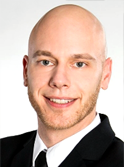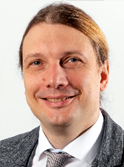Additive manufacturing for health technology applications
Abstract
In this study we demonstrate an overview about possibilities in using additive manufacturing for tissue engineering and orthopedic prosthesis. We show the possibilities to produce scaffolds by using a low cost commercial stereolithography system under the use of biocompatible hydrogels like Poly(ethylene glycol) diacrylate. We also demonstrate that it is possible to use a low cost selective laser sintering system to produce individual prostheses to support the healing process in many orthopedic issues.
Downloads
Copyright (c) 2019 Sven F. Klimaschewski, Robert Raschke, Mark Vehse

This work is licensed under a Creative Commons Attribution 4.0 International License.
Authors retain full copyright to their individual works.
The Journal of Mechanical and Energy Engineering (JMEE) publishes fully open access articles.
Open Access benefits:
- High visibility – all articles are made freely available online for everyone worldwide, immediately upon publication.
- Increased visibility and readership.
- Rapid publication.
- All articles are CC BY licensed. The final article can be reused and immediately deposited in any repository.
- Authors retain the copyright to their work.
By publishing with us, you retain the copyright of your work under the terms of a Creative Commons Attribution 4.0 International (CC BY) license.
The CC BY license permits unrestricted use, distribution and reproduction in any medium, provided appropriate credit is given to the original author(s) and the source, a link to the Creative Commons license is included, and it is indicated if any changes were made. This means that you can deposit the final version of your work in any digital repository immediately after publication.
We are committed to providing high-level peer review, author and production services, so you can trust in the quality and reliability of the work that we publish.





